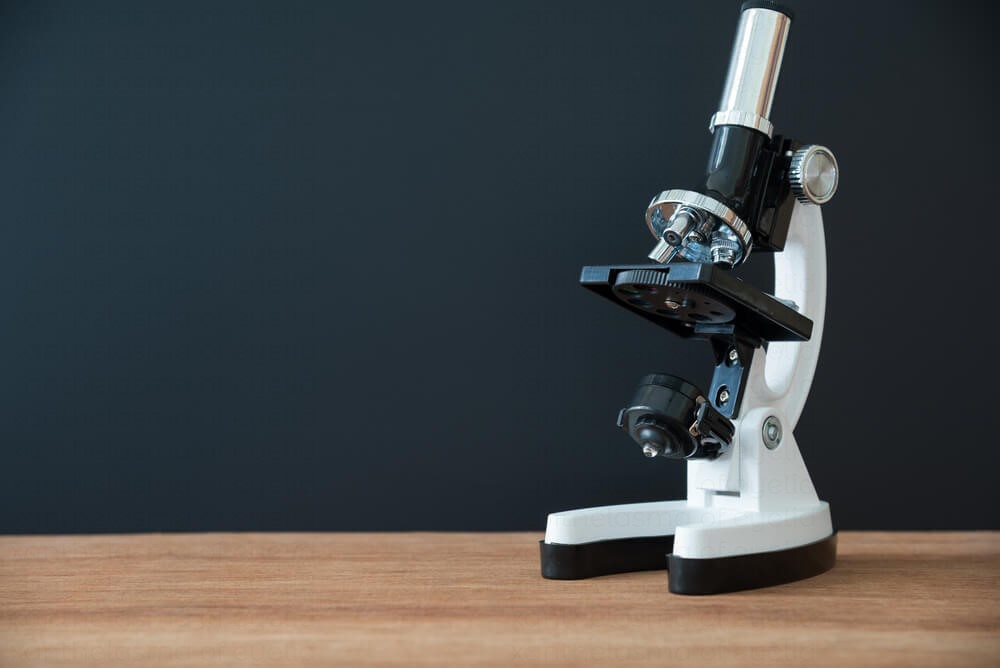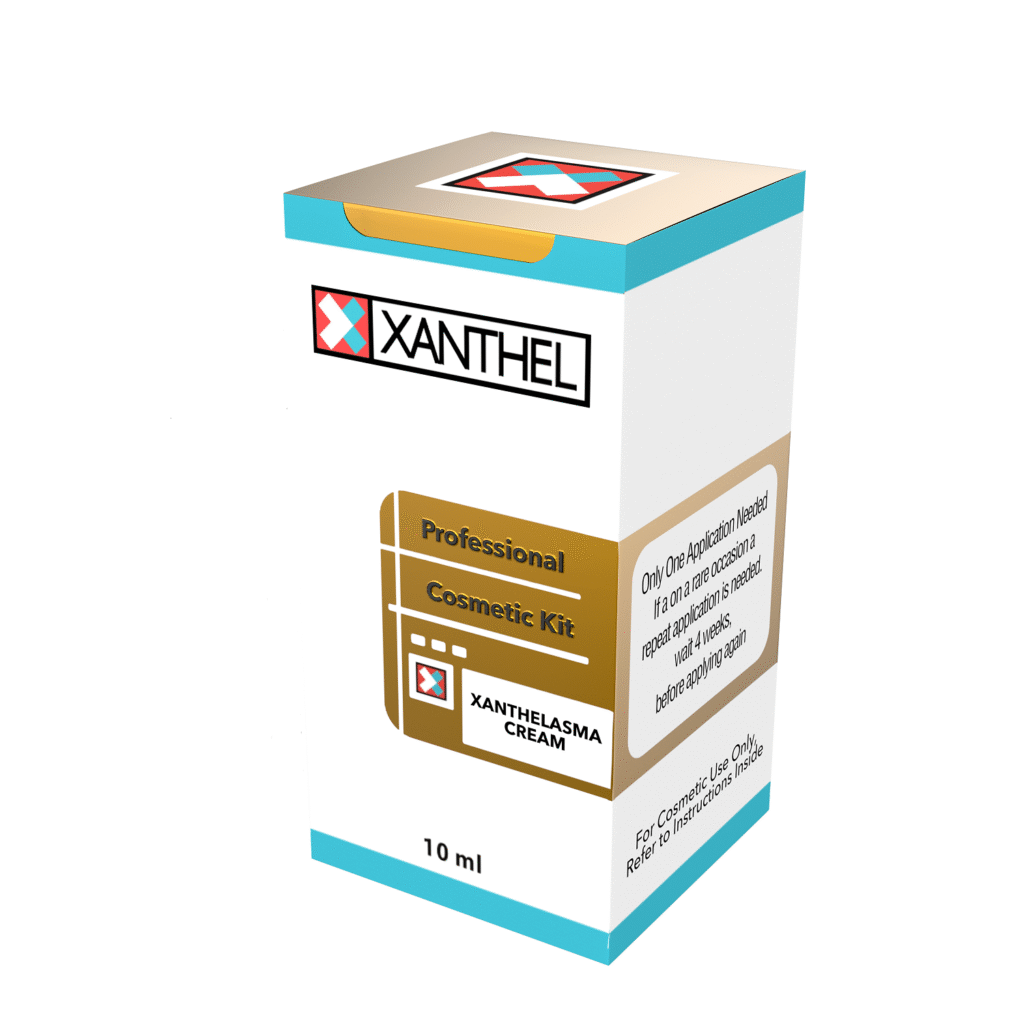Treating Xanthelasma
Definition and Relevance
Xanthelasma palpebrarum, a term coined from the Greek words “xanthos” meaning yellow and “elesma” referring to a plate, is a condition characterized by the formation of yellowish plaques typically around the eyelids. These plaques are harmless cholesterol deposits, but they can be a source of aesthetic concern or indicate deeper metabolic issues. As you consider treatment options, it’s important to understand that xanthelasma:
– Does not usually resolve without intervention
– May increase in size over time if untreated
– Is often addressed for cosmetic reasons
– Can recur after treatment
Your decisions regarding treatment will depend on your individual preferences and clinical presentation, which may also influence the recommendations of your healthcare provider.
Risks and Causes of Xanthelasma Formation
It’s essential to recognize that xanthelasma may be more than a cosmetic concern. The appearance of these yellow plaques can signify an underlying health condition, particularly in the context of lipid metabolism disorders:
– High Cholesterol Levels: Xanthelasma can be an external manifestation of high cholesterol levels in your body.
– Genetic Factors: Some individuals have a predisposition to xanthelasma due to hereditary factors.
– Liver Disease: Underlying liver conditions can also increase the risk of developing xanthelasma.
– Ageing: The likelihood of developing xanthelasma increases with age.
– Gender: Women are more prone to xanthelasma compared to men.
Considering these factors is critical when forming a treatment plan, as managing any underlying condition is an integral part of long-term xanthelasma control. In coordination with an interprofessional healthcare team, a comprehensive evaluation can ensure a personalized treatment approach, striking a balance between addressing cosmetic concerns and potential systemic issues related to xanthelasma.
– Treatment Options to Consider: Depending on the size and extent of xanthelasma, options range from surgical excision, laser therapy, and cautery and Xanthel ® at home application. Each method has its benefits and drawbacks:
– Surgical Excision: Offers the benefit of immediate removal but carries risks associated with surgery.
– Laser Therapy: Provides precision and minimal scarring but may require multiple sessions.
– Cautery: Can be effective for smaller lesions but may not be suitable for extensive plaques.
– Xanthel ®: Is a non-surgical option that shrivels and removes the plaques, also stopping regrowth.
– Importance of Professional Guidance: Only a qualified treatment provider can determine the best course of action, taking into account the size, location, and number of plaques, along with the patient’s medical history and treatment preferences.
– Follow-Up Care: Crucial for assessing the efficacy of the treatment, monitoring for signs of recurrence, and managing any side effects or complications.
Your active participation in the decision-making process, combined with the expertise of healthcare professionals, paves the way for optimal treatment outcomes. Follow-up appointments are a pivotal part of the journey, ensuring both the cosmetic and systemic implications of xanthelasma are effectively managed for long-term satisfaction and health.

Clinical Presentation of Xanthelasma
When considering the clinical presentation of xanthelasma palpebrarum, it’s essential to understand its distinctive features and how the condition may progress over time. Below, we delve into the physical characteristics and cluster formation of xanthelasma, so you can better comprehend what these lesions look like and how they may develop.
Identifying Xanthelasma: Physical Characteristics
– Location: Xanthelasma typically appears on the eyelids, most commonly near the inner canthi of the eyes.
– Color: These lesions are known for their yellowish appearance, which is caused by the accumulation of lipid-laden macrophages in the skin.
– Shape: The shape of xanthelasma can vary, but they usually present as soft, flat plaques or slightly raised lesions.
– Size: The size of these patches can range from very small to several centimeters in diameter.
– Texture: Xanthelasma plaques are typically soft and have a smooth surface.
– Pain and Other Symptoms: Generally, xanthelasma is asymptomatic, meaning they do not cause pain or discomfort. However, patients often express concern regarding their appearance.
When evaluating xanthelasma, it is also crucial to differentiate it from other potential lesions that could appear around the eyes, such as syringomas, milia, or basal cell carcinomas. Once identified, the appropriate treatment options can be considered and discussed with you.
Cluster Formation and Progression of Xanthelasma
– Initial Appearance: Xanthelasma often appears as a singular plaque but may increase in size or number over time.
– Growth Pattern: If left untreated, these lesions can grow and coalesce into larger plaques or clusters around the eyelids.
– Symmetry: Xanthelasma plaques may develop symmetrically on both eyelids.
– Progression and Recurrence: The course of xanthelasma can be unpredictable. While some plaques remain stable for years, others may grow gradually. Even with treatment, recurrence is a possibility you should be aware of.
– Systemic Associations: In some cases, xanthelasma can be an indicator of hyperlipidemia, which warrants further evaluation for potential systemic health implications.
In terms of treatment, it’s imperative to consider both the patient’s preferences and their overall health. If xanthelasma is linked to an underlying lipid disorder, management of the systemic condition is equally important as addressing the cosmetic concerns. We’ll have to work closely with the interprofessional healthcare team, which may include dermatologists, ophthalmologists, primary care providers, and possibly endocrinologists, to ensure a comprehensive approach to both immediate and long-term management.
Moreover, follow-up is essential to monitor the effectiveness of any treatment undertaken and to address any potential recurrence early. By individualizing treatment and providing careful coordination of care, our aim is to help manage both the physical and emotional impacts of xanthelasma palpebrarum.

Non-Surgical Management
When you’re facing xanthelasma palpebrarum, there are several non-surgical treatment options available that can be effective in managing this condition. Below is an overview of lipid-lowering strategies and topical treatments that may help you in addressing both the appearance and possible underlying causes of xanthelasma.
The Role of Lipid-Lowering in Xanthelasma Treatment
– Understanding the Connection: Since xanthelasma plaques consist of lipid deposits, controlling lipid levels in the blood can be a key strategy in management. They may not only reduce the plaques but also address potential systemic risks associated with elevated lipids.
– Lifestyle Modifications: As with many health conditions, lifestyle changes can be instrumental. You should consider adopting a diet low in cholesterol and saturated fats, coupled with regular physical activity.
– Medications: In some cases, lipid-lowering medications, such as statins or fibrates, might be prescribed by your healthcare provider to manage high cholesterol levels.
– Monitoring Lipid Levels: Regular check-ups and lipid profiling can help track the effectiveness of the interventions and adjust the treatment plan according to your specific needs.
– Benefits Beyond Cosmetics: It’s important to keep in mind that lowering lipid levels isn’t just about reducing the xanthelasma plaques; it’s about improving your overall cardiovascular health.
Xanthel ® Treatment and Their Effectiveness
– Xanthel ® is specifically developed to target xanthelasm and surface xanthomas. A one time application done at home, that shrivels and removes the xanthelasma.
– Application Process: The formulated treatment is applied following the treatment guidelines (included). The treatment takes aorund 1 minute, then the skin is cleaned and the natural process of the skin healing takes over, removing the xanthelasma.
– Pros and Cons: Although Xanthel ® application is very effective, it’s imperative to consider the potential for scarring and pigment changes in the treated area, if the after care suggested after treatment is not followed.
– Aftercare: Post-treatment care involves keeping the area clean and protected from sunlight. Application of a high quality anti-bacterial cream is imperative in speeding up the healing process of the skin.
It’s imperative to have a thorough discussion with your treatment provider about all available non-surgical options, their potential benefits, and risks. Your provider can help you make an informed decision that aligns with your health goals and cosmetic desires. Remember, while these treatments can improve the appearance of xanthelasma, they do not guarantee prevention of future plaques, making ongoing monitoring and possibly repetitive treatments a reality for many patients. Each individual’s experience with non-surgical management will vary, so personalizing the approach is key to achieving the best possible outcomes.

Surgical Excision Techniques
In addressing your concerns about xanthelasma, especially when it becomes a significant cosmetic issue, you may consider surgical excision techniques. This section will provide you with an overview of the procedural aspects and the necessary post-surgical care that should follow to maximize healing and minimize the risk of recurrence.
Procedure Overview for Surgical Removal of Xanthelasma
Understanding the Procedure
– You will likely be scheduled for an outpatient appointment, meaning the surgical excision of your xanthelasma can be completed in a clinical setting.
– Local anesthesia will be administered to ensure comfort throughout the procedure.
Steps of Surgical Excision
– A careful incision is made around the perimeter of the xanthelasma plaque.
– The lesion is meticulously removed, taking care to preserve the surrounding tissues and the aesthetic appearance of the eyelid.
– Sutures will be placed if necessary, using very fine materials to optimize cosmetic outcomes.
Potential Complications
– As with any surgery, there is a risk for bleeding, infection, and scarring.
– Changes in eyelid shape or function are uncommon but possible, depending on the size and location of the xanthelasma.
Recurrence Prevention
– While the surgical removal of xanthelasma is aimed to be definitive, the risk of recurrence exists. Detailed discussions about lipid management and lifestyle modifications will be part of the treatment plan to reduce this risk.
Post-Surgical Care and Considerations
Immediate Post-Surgical Care
– Following the excision, an antibiotic ointment and a sterile bandage may be applied to the area.
– Instructions will be provided on how to care for the surgical site, including gentle cleaning and observation for signs of infection.
Recovery Time and Activity Restrictions
– Most patients can return to normal, non-strenuous activities almost immediately, with avoidance of heavy lifting or vigorous exercise until the eyelid has healed.
– It is crucial to follow-up with your healthcare provider to have sutures removed, if they are not absorbable, and to ensure proper healing.
Long-Term Care and Monitoring
– Continued monitoring for any signs of recurrence is vital.
– Proper management of lipid levels, if elevated, can help to prevent the return of xanthelasma and also protect your overall cardiovascular health.
– Regular appointments with your healthcare providers, including your primary care physician or dermatologist, will be necessary to monitor both surgical outcomes and systemic health measures.
By understanding these treatment options and care strategies, you can make informed decisions regarding the management of xanthelasma and take an active role in ensuring the most favorable cosmetic and health outcomes. Keep in mind that an individualized plan, developed in collaboration with your healthcare team, will provide the best blueprint for managing xanthelasma effectively.
Laser Therapy Options
Laser treatments for xanthelasma offer a less invasive alternative to surgical methods, which can minimize tissue damage and provide a quicker recovery time. Here we explore the most effective laser therapies: fractionated Erbium:YAG (Er:YAG) and fractionated carbon dioxide (CO2) lasers, highlighting their procedure, effectiveness, and what you can expect during and after treatment.
Procedure and Effectiveness of Erbium:YAG (Er:YAG) Laser Therapy
Procedure Insights
– For an Er:YAG laser treatment, you will be under local anesthesia to eliminate any discomfort.
– The laser precisely targets the xanthelasma plaques, vaporizing them layer by layer to ensure minimal impact on surrounding tissue.
– The session duration depends on the size and number of lesions, but it typically takes within minutes to an hour.
Efficacy and Benefits
– Er:YAG laser therapy is highly precise, leading to a reduced risk of scarring compared to other treatments.
– The healing process is relatively fast, with lesser downtime.
– The laser stimulates collagen production, which promotes better skin texture post-procedure.
Post-Procedure Care
– Immediately following the treatment, a soothing gel or cream is applied, and instructions are given for at-home care.
– Mild redness or swelling can occur but usually subsides within a few days to a week.
– Sun protection is crucial to prevent pigmentation changes during the healing phase.
Risks and Considerations
– Though side effects are typically mild, there’s a small risk of hyperpigmentation or, rarely, hypopigmentation, especially in darker skin tones.
– Since recurrence is very common, ongoing assessment and lifestyle modifications will be advised.
Carbon Dioxide (CO2) Laser Ablation Methodology
Understanding CO2 Laser Treatment
– CO2 laser treatment is similar to the Er:YAG laser but utilizes a different wavelength that is also absorbed by water in the tissues.
– The CO2 laser is effective in removing the lesions with limited heat damage to the adjacent areas.
Advantages and Recovery
– This method can be very precise, with a low risk of affecting nearby skin.
– The CO2 laser seals blood vessels as it works, often leading to less bleeding and bruising.
– Recovery typically involves some swelling and redness, with healing taking place over one to two weeks.
Limitations and Follow-Up
– A significant consideration with CO2 lasers is the potential for hypopigmentation, making it less suitable for darker skin types.
– It’s essential to have a follow-up appointment to monitor healing and to discuss preventive measures against recurrence.
By exploring these laser therapy options, you take a step towards effective management of xanthelasma. Your healthcare provider can help you weigh the pros and cons of each method, ensuring a treatment that aligns with your comfort, aesthetic goals, and overall health strategy.
Nd: YAG and Pulsed Dye Laser Treatment Efficacy
While Nd: YAG and pulsed dye lasers can be used for skin conditions, they are less common in treating xanthelasma. They offer non-abrasive treatment methods and can be alternatives for certain patients, but compared to Er:YAG and CO2 lasers, they might not provide the same level of efficacy in the removal of these specific plaques. When making a decision about laser treatments, it is essential to consult with a specialist who can provide personalized advice based on your unique circumstances.

Medicinal Methods to Slow Growth
Overview of Medicinal Concepts
When considering treatment options for xanthelasma, you may encounter various medicinal methods that promise to slow down the growths.
Cholesterol-Lowering Medications
– Medications such as statins and fibrates are prescribed to control blood lipid levels, which may indirectly affect the speed of growth of xanthelasma plaques.
– These medications don’t directly target the growths but might reduce their spread by lowering the lipid content in your blood.
Bile Acid Sequestrants
– These are another class of drugs used to manage high cholesterol levels by binding to bile in your digestive system, preventing it from being reabsorbed.
– Much like the statins and fibrates, they have an indirect effect on xanthelasma by slowing the amount of cholesterol that could contribute to plaque formation.
When evaluating medicinal options, it’s crucial to discuss with your healthcare provider the likelihood of positive outcomes balanced against the potential side effects. Treatment plans should be tailored to your specific condition and your overall health status. Medical treatment is typically recommended when xanthelasma is associated with underlying lipid disorders, which further emphasize the importance of comprehensive management strategies.

Cosmetic Considerations for Xanthelasma Patients
If you are contending with xanthelasma palpebrarum, you may find its appearance unsettling or bothersome. Considering treatment options will involve not only the medical efficacy but also the cosmetic outcomes that align with your preferences.
Addressing Xanthelasma for Enhanced Aesthetics
You should be aware that the appearance of xanthelasma can be effectively reduced or eliminated with various treatments, leading to an enhanced aesthetic outcome. Here are some key points:
– Surgical Excision: This option involves precisely removing the plaques, offering immediate results. It is usually performed under local anesthesia with minimal discomfort. However, surgical excision requires careful consideration of scar potential and the expertise of your surgeon.
– Laser Therapy: Utilizing a focused beam of light to destruct the xanthelasma, laser therapy can be a less invasive option. The precision of the laser allows for minimal impact on the surrounding skin, reducing the chance of scarring.
– Xanthel ® removal cream: Fast one time application, carried out at home. The formulated cream reacts with and shrivels the cholesterol laden cells and leaves the skin to then heal naturally. Regrowth of the xanthelasma after this treatment is very rare.
Each of these treatments can significantly improve the cosmetic appearance of your eyelids. It’s essential to have a comprehensive consultation with your dermatologist to discuss the most appropriate approach based on the size, number, and thickness of your xanthelasma plaques, as well as your skin type and personal preferences.
Psychological Impact of Xanthelasma on Patients
Beyond the physical treatment of xanthelasma, it’s important to recognize and address the psychological impact it may have on you. Xanthelasma can lead to self-consciousness and a decrease in confidence, which might affect social interactions and overall quality of life.
– Professional Support: Engage with professionals who can not only provide the medical care you need but also understand the psychosocial aspects of xanthelasma. Psychodermatology is an emerging field that combines the expertise of a dermatologist with an understanding of the emotional aspects of skin conditions.
As you proceed with your treatment plan, remember that comprehensive care involves regular follow-ups and possibly lifestyle modifications to manage underlying lipid abnormalities, if present. It’s crucial to work closely with the interprofessional healthcare team, including your primary care provider, dermatologist, and possibly a dietitian, to ensure that both the cosmetic and systemic aspects of xanthelasma are adequately addressed.

Reflection and Prevention
Summarizing Treatment Options for Xanthelasma
As you consider your treatment options for xanthelasma, it’s crucial to review the approaches that best suit your needs:
– Surgical Excision: Though offering immediate results, you should weigh the possibility of scarring against the benefits of plaque removal. This option necessitates a discussion about the surgeon’s skill level and experience.
– Laser Therapy: This may be a preferable choice for those concerned with the invasiveness of surgery. Its precision is especially helpful in the delicate eye area, with a reduced risk of scarring.
– Xanthel ® Removal Cream: For those looking for a non-surgical approach, Xanthel ® is notable for its effectiveness. The treatment aims at leaving no scars and returning the skin back to normal.
It’s important to understand that while these treatments have high initial success rates, xanthelasma may recur. This necessitates a proactive approach to post-treatment care. You should maintain regular visits with your dermatologist to monitor for any signs of recurrence and address them promptly.
Prevention Strategies and Lifestyle Modifications
Preventing xanthelasma involves understanding potential contributing factors, such as high lipid levels. Here are steps you can take to manage your risk:
– Dietary Changes: Adopt a diet low in cholesterol and saturated fats. Increase your intake of fiber-rich foods, fruits, and vegetables. This may help lower your lipid levels and reduce the likelihood of xanthelasma.
– Regular Exercise: Engage in regular physical activity, which can help improve your lipid profile and overall health.
– Medication: If you have high cholesterol or other lipid abnormalities, comply with prescribed medications to help manage these conditions.
Remember that you also play a role in preventing recurrence post-treatment:
– Follow-Up Care: Keep your follow-up appointments to monitor your eyelids for any signs of xanthelasma returning.
– Skin Care: Protect your skin, especially around the eyes, with gentle care and sun protection. This can help maintain healthy skin and possibly prevent recurrence.
Taking charge of your health through preventive measures and lifestyle modifications not only helps manage xanthelasma but also contributes to better overall heart health. Work with your healthcare team to tailor a plan that aligns with your medical needs and lifestyle preferences, ensuring both effective treatment and active prevention of xanthelasma.





